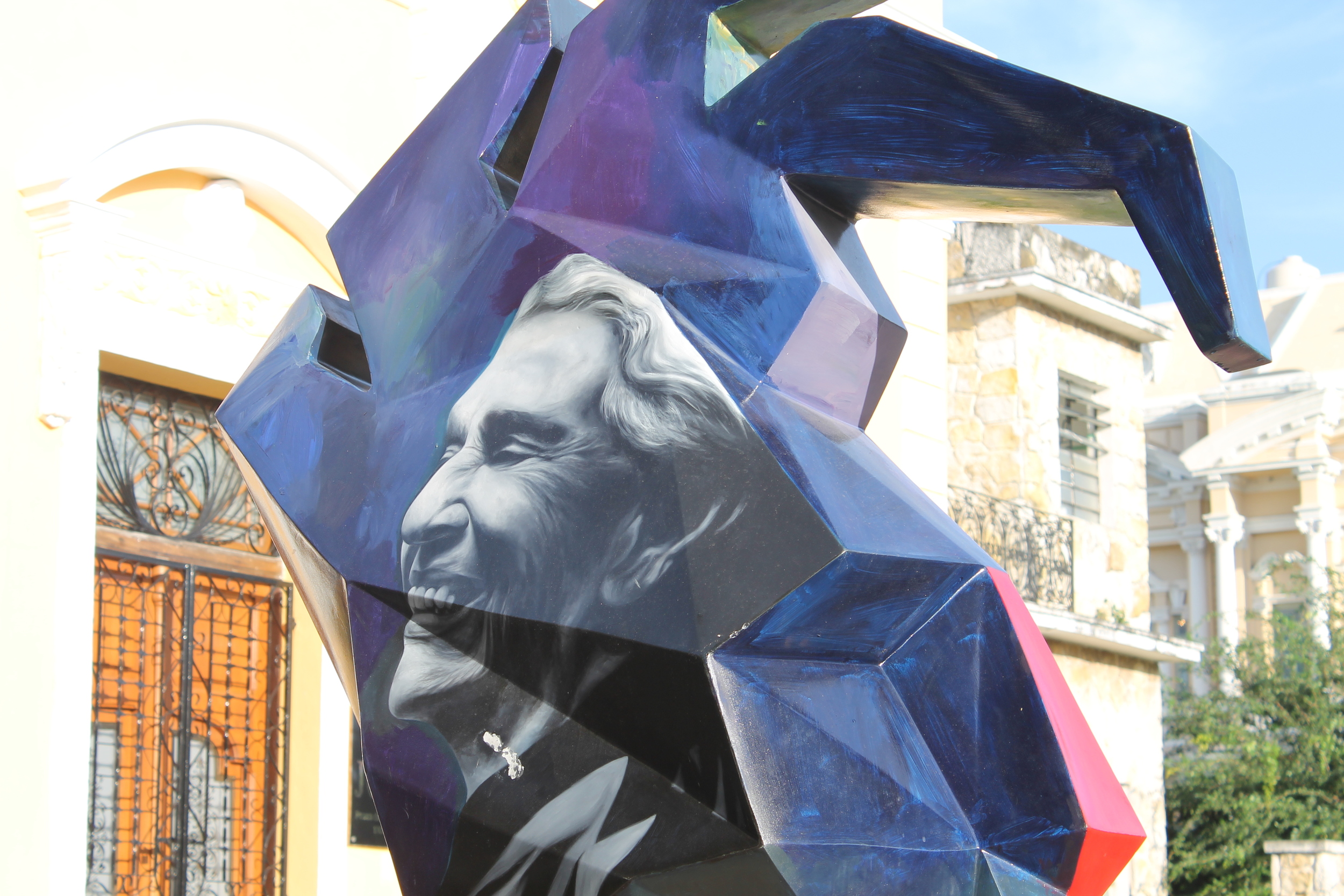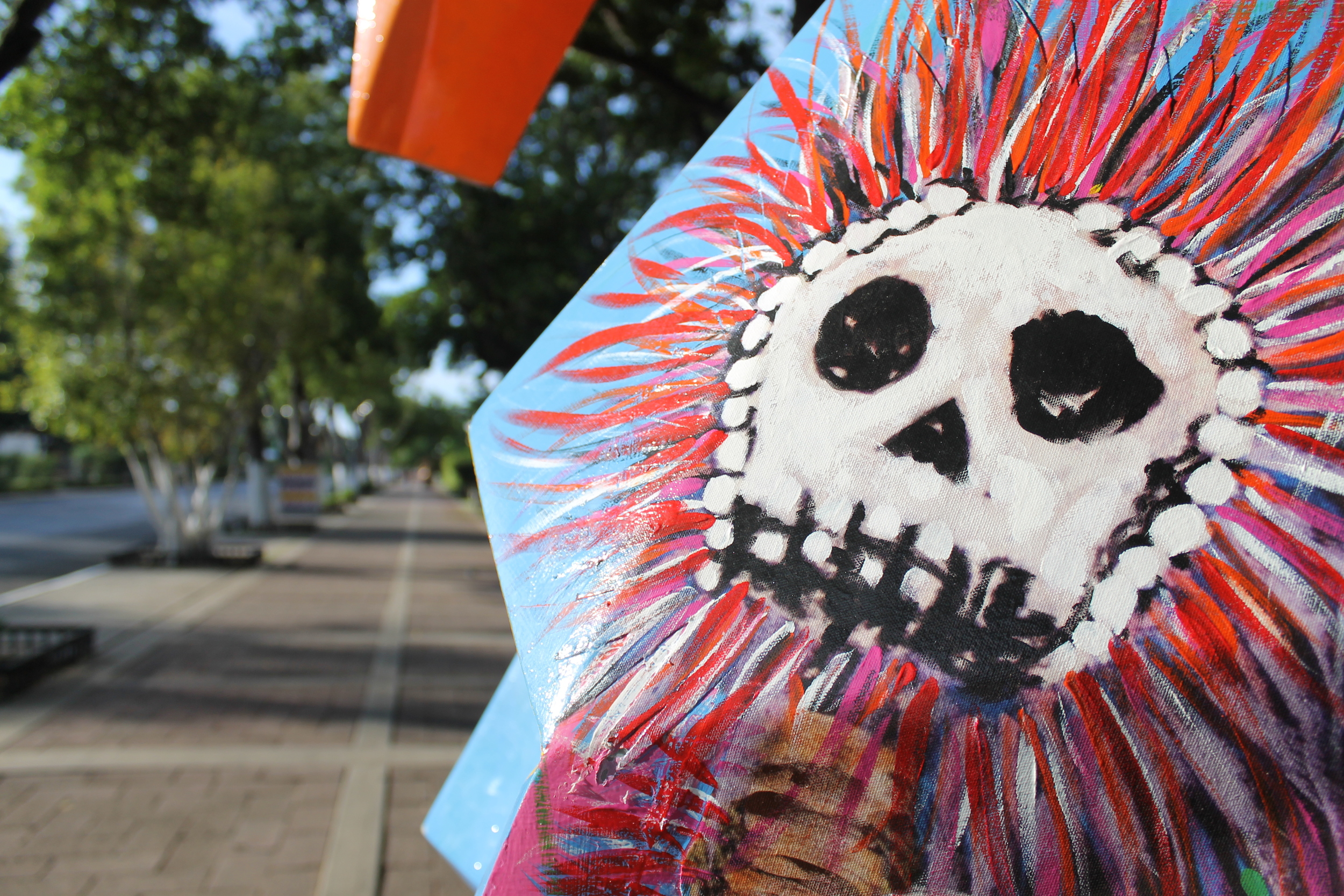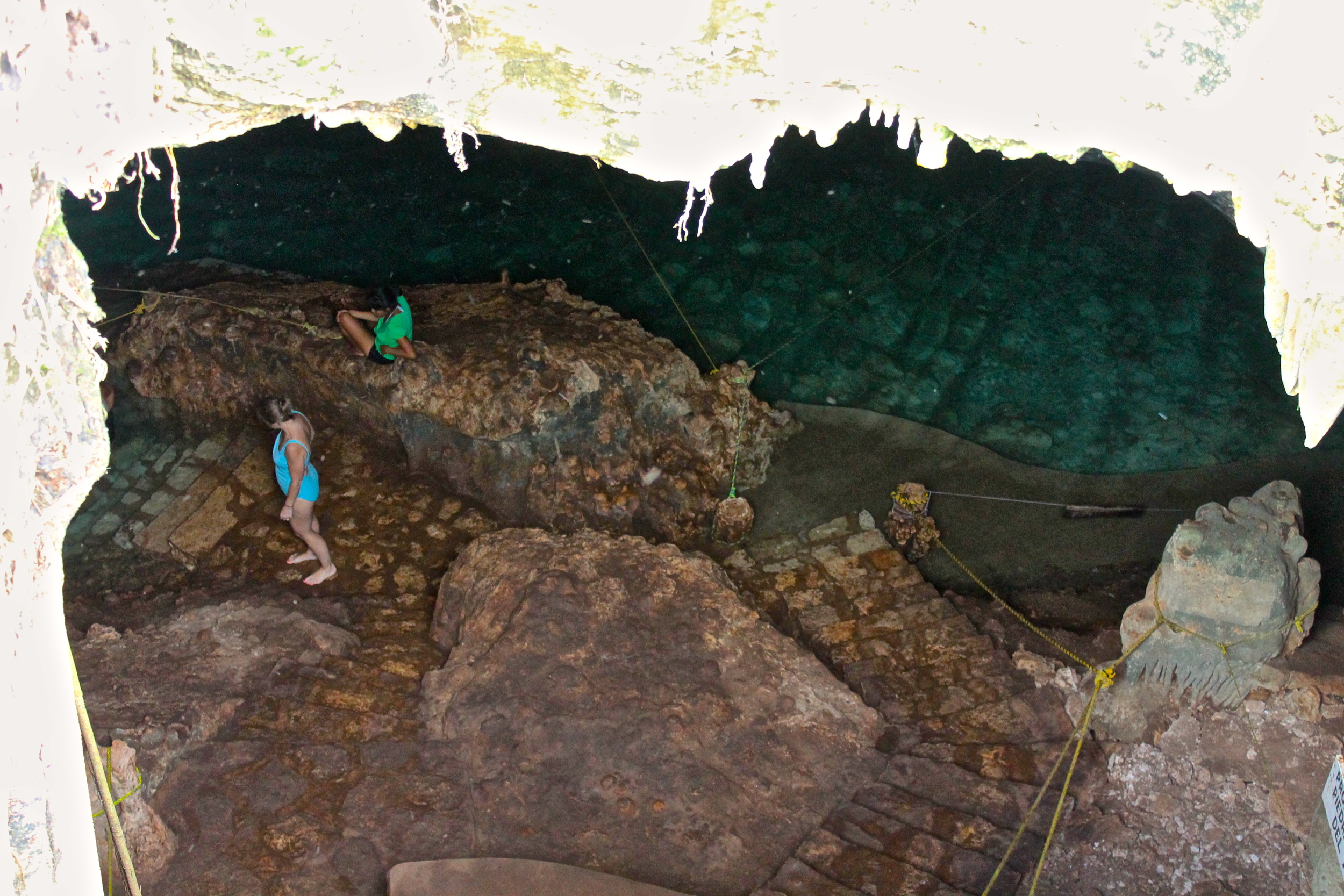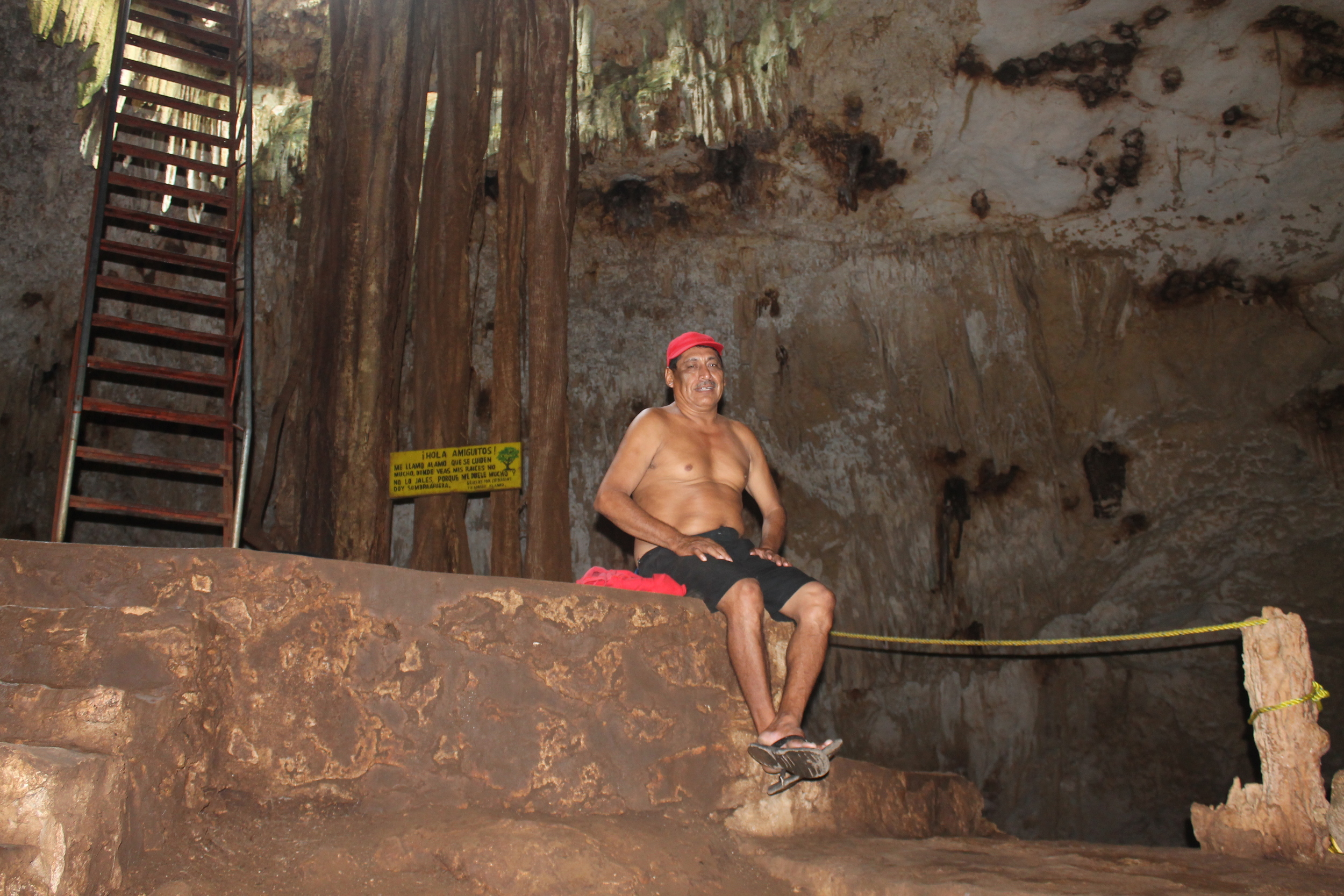Wooden cross in stucco on a church wall in Mama (that's the name of the town, really)
One of the routes that is promoted among tourism organizations is the so-called Convent Route or Ruta de los Conventos. I refer to it as "so-called" as it is really just a list of towns that have churches in them, dating back to the 1600's and that are full of history, but there is no real coordination of the touristic kind and if you arrive after the last morning mass, you are out of luck. No convent for you!
So, to do it right, you have to get up early. Our intrepid little group of three left Merida at the ungodly (no pun intended) hour of 7 AM and found that that is the perfect time to visit at least 4-5 of the churches on the route before they close for the day.
First stop? The furthest point of the day's travel: Teabo. Teabo sounds like what you say when you love someone, in Spanish, and have a cold. Te amo. Teabo. Get it? The photos will speak for themselves; a very picturesque little church that was closed but a little chat with the gardeners trimming the grass outside and they found someone with a key and it was opened just for us.
After we had our fill of Teabo and purchased some fresh tortillas at the tortilleria for breakfast, we moved along to our next stop, Chumayel, famous for its black Christ figure which was saved by a local villager named Severo who hid the wooden statue in his home when Salvador Alvarado's troops came to town with orders to burn the insides of the church. Salvador Alvarado was determined to break the church which had far too much power for the politicians of the day and ransacking and burning churches seemed like a good way to go about it.
Next stop: Mama. That's "no, no" in Mayan unless someone tells you otherwise. Then, you let ME know what it means. Mama in Spanish of course means female breast (where do you think mammary comes from) and if you add an accent ie. Mamá, then you have Mom. But I digress. Enjoy the photos of Mama's church, one of the larger churches of the day, so far. By the way, if you are on this tour, you might be feeling the urge to visit a bathroom at this point - feel free to use the bathroom at the municipal hall across the street.
Just at the entrance to Chumayel is a very colorful and photogenic cemetery that's worth a stop. So stop we did.
Tekit was the next stop on the day's tour, making it church number 4, and miraculously none of the churches were closed up to this point! Note that there are a lot of towns in the Yucatan that begin with the prefix "Te" (Tekit, Tekik, Tecoh, Tekax, Temozon, etc. etc.) and that is because the word "te" means something along the lines of "place of". Temozon, for example is Te = place of and Mozon = whirlwind. Anyway. Back to Tekit (no idea what a kit is).
The church itself is fine, a little run down compared to the others. The town looks like it has some money, but it is pretty sad looking. The mangy and hairless dog in the main square, standing dejectedly and in obvious pain waiting for some kind of relief, the dusty streets, graffiti next to the Jesus statue in the church; everything looks run down. Compared with a place like nearby Tecoh, where the residents seem to have some pride in their town and it shows, Tekit looks like no one cares.
Now the sun was shining in earnest and so we stopped for lunch at the Nah Luum hotel and restaurant, just across the street from the Tecoh exit off the highway and I was pleasantly surprised to find not only an attractive little restaurant and hotel, but smiling, gracious servers and good food!
Then, a small backtrack to a refreshing cenote on the way before returning to Merida - tired but satisfied with the day's achievements.


















































































































